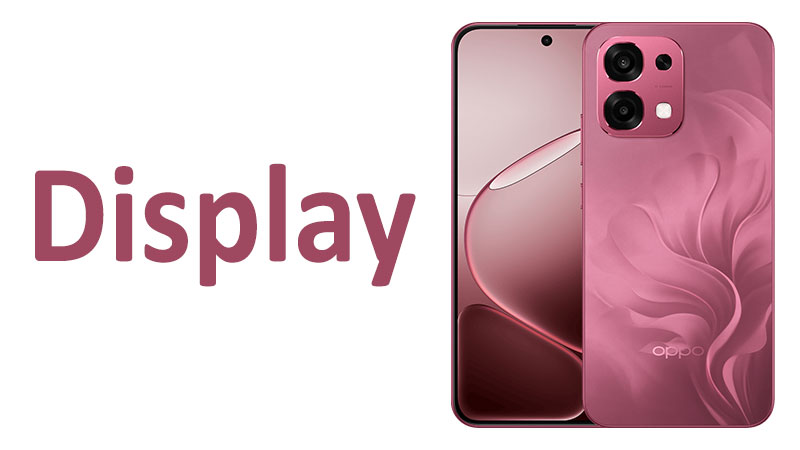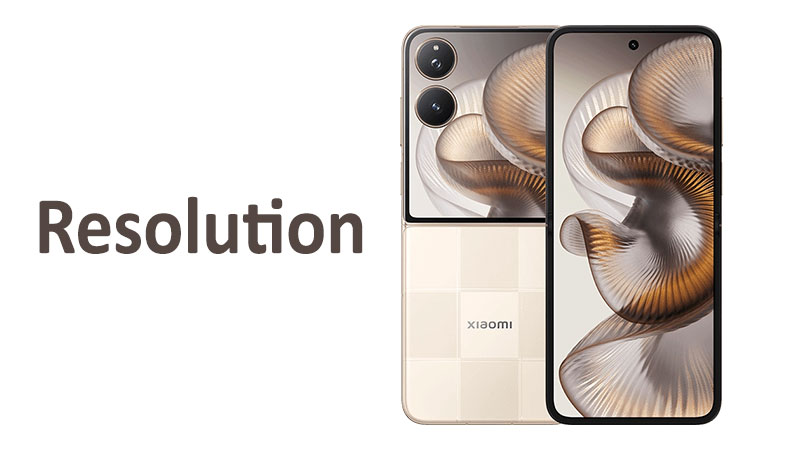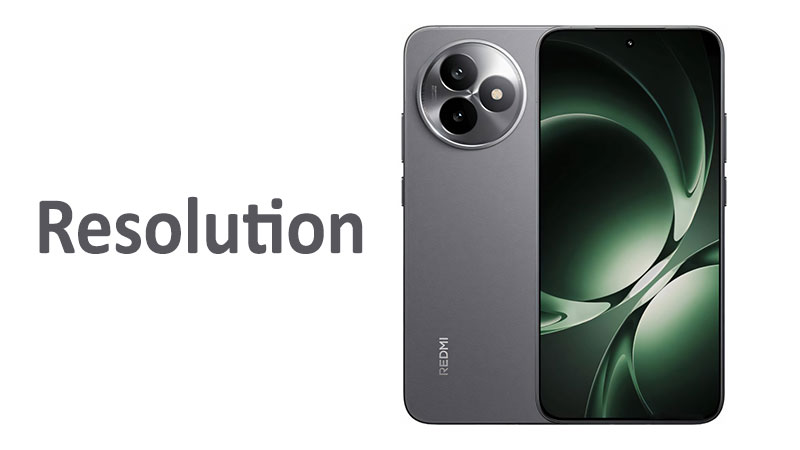The Oppo F31 display is the centerpiece of this mid-to-high-range smartphone. A screen’s quality dictates the entire user experience. It affects everything from scrolling social media to competitive gaming. Therefore, assessing the display’s technical specifications is essential. This comprehensive review examines the Oppo F31’s screen in detail. We will cover its AMOLED panel, 120Hz refresh rate, brightness levels, and overall clarity. This analysis ensures buyers have all the necessary information before making a purchase. The display is a critical factor in any modern mobile device.
Core Display Technology: Premium AMOLED Panel
The Oppo F31 utilizes advanced AMOLED technology. AMOLED stands for Active-Matrix Organic Light-Emitting Diode. This is the industry standard for high-quality mobile screens. AMOLED panels offer distinct advantages over traditional LCD screens. Each individual pixel generates its own light. This crucial feature is responsible for the screen’s excellent performance.
Contrast: The Power of True Black
The self-emissive nature of AMOLED technology delivers perfect black levels. When a pixel displays black, it simply turns off completely. This means zero light is emitted from those areas. The resulting contrast ratio is technically infinite. Deep, inky blacks contrast stunningly with bright whites. This creates images with exceptional depth and visual impact. This contrast greatly enhances the viewing of movies and photos.
Color Depth: Embracing 1 Billion Colors
The Oppo F31 display boasts support for 1 billion colors. This is known as 10-bit color depth. This massive palette is far superior to standard 8-bit displays. Older panels display only 16.7 million colors. The wider 10-bit gamut allows for incredibly fine color grading. This virtually eliminates color banding, which appears as visible steps in color gradients. Photographers and digital artists require this level of color fidelity. It ensures that content is displayed exactly as intended. This wide color support is a key indicator of a premium screen experience.
Color Calibration and Gamut
Oppo typically calibrates its displays to cover the DCI-P3 color space. This is the standard used in the cinematic industry. Full DCI-P3 coverage ensures accurate and vibrant color reproduction for videos. Users can usually switch between ‘Vivid’ and ‘Gentle’ color modes. The ‘Gentle’ mode often aligns with the sRGB standard. This is ideal for web browsing and standard photography. The ability to switch modes gives the user flexibility. They can choose between punchy saturation or professional color accuracy.
Performance Metrics: Speed and Fluidity
The speed at which a display updates is now as important as its resolution. The Oppo F31 delivers flagship-level fluidity. Its high refresh rate ensures a smooth and responsive interface.
The 120Hz Refresh Rate Advantage
The display features a fast 120Hz refresh rate. This means the screen updates 120 times every second. This rate doubles the performance of older 60Hz displays. The jump in fluidity is immediately noticeable to any user. Simple actions, like scrolling through a webpage, become buttery smooth. The phone feels much faster and more responsive as a result.
Gaming at 120 Frames Per Second
Mobile gaming benefits most dramatically from 120Hz. The display can render up to 120 frames per second in compatible games. This provides a significant competitive advantage. Players see less motion blur and better clarity during fast-paced action. The high refresh rate can improve reaction times. It creates a more immersive and less fatiguing gaming session. The 120Hz capability is essential for any serious mobile gamer.
Comparison: 120Hz vs. 60Hz and 144Hz
The 120Hz rate is a perfect mainstream choice. It is a major upgrade from the 60Hz panels found on budget phones. The difference between 120Hz and an even higher 144Hz is less noticeable. Most users find 120Hz provides diminishing returns beyond this point. Furthermore, 120Hz is often more power-efficient than 144Hz. It balances excellent smoothness with reasonable battery consumption. This makes the 120Hz panel a smart, practical choice for a high-performance device like the Oppo F31.
Brightness: Clarity in All Conditions
The display’s ability to shine brightly affects its usability everywhere. The Oppo F31 offers strong luminance figures. These numbers ensure content is visible indoors and outdoors.
Typical Brightness: 600 Nits for Daily Use
The typical brightness is listed at 600 nits. Nits measure the display’s light output. 600 nits is more than adequate for indoor use. It provides a comfortable and clear viewing experience in standard lighting. This level ensures good visibility when browsing at home or in an office setting. However, this typical figure does not represent the screen’s maximum capability. It simply represents the stable brightness level.
High Brightness Mode: 1400 Nits for Sunlight
The display achieves a peak brightness of 1400 nits in High Brightness Mode (HBM). HBM automatically activates under intense light, like direct sunlight. The 1400-nit peak is excellent for outdoor readability. Users will not struggle to read text messages or navigate maps outside. This high figure makes the Oppo F31 reliable in bright environments. This is a crucial feature for anyone who spends significant time outdoors.
HDR Performance and Luminance
The 1400 nits HBM also significantly boosts HDR content. High Dynamic Range videos require intense peak luminance. This is necessary to correctly display bright highlights. The 1400-nit maximum ensures bright flashes and explosions look impactful. It enhances the realism and dynamic range of supported media. This excellent brightness confirms the F31’s credentials as a great multimedia device. The display offers an outstanding visual experience for movies and shows.
Size and Resolution: Immersion and Sharpness
The physical size and the number of pixels define the scale and clarity of the display. The Oppo F31 strikes a careful balance between immersion and usability. The screen provides a high-quality viewing surface.
The Expansive 6.57-inch Screen
The screen measures 6.57 inches diagonally. This is a standard size for modern, large-screen smartphones. The spacious display is perfect for multimedia consumption. Movies and games feel immediately more immersive on a screen this size. It also offers ample room for split-screen multitasking. Running two applications simultaneously is easier. However, this large size can make one-handed operation difficult for some users.
Screen-to-Body Ratio: Maximized View
The Oppo F31 achieves an approximate 88.5% screen-to-body ratio. This means the bezels around the screen are very thin. Thin bezels contribute to a more modern and premium appearance. They maximize the space dedicated to content. This high ratio is common for devices in this price segment. It helps keep the phone’s overall footprint manageable despite the large screen.
Clarity: Full HD+ Resolution
The resolution is 1080 x 2372 pixels. This is a refined Full HD+ resolution. It provides a pixel density of approximately 397 pixels per inch (ppi). A density of 397 ppi is extremely sharp. It ensures text is crisp and fine details are clearly visible. Individual pixels are essentially invisible at normal viewing distance. This excellent clarity is perfect for reading and viewing high-resolution images. This resolution level is highly efficient for the battery.
Resolution Comparison: FHD+ vs. QHD+
The choice of Full HD+ over Quad HD+ (1440p) is a deliberate engineering decision. While 1440p screens are technically sharper, the difference is hard to spot. Most users cannot distinguish between 1080p and 1440p on a phone screen. The benefit of 1080p is better battery life. It also reduces the workload on the phone’s processor and graphics chip. This results in smoother performance, especially during demanding games. The Oppo F31 makes a practical choice prioritizing performance and battery life.
Durability and Protection: AGC DT-Star D+
Screen protection is vital for the longevity of any smartphone display. The Oppo F31 uses AGC DT-Star D+ glass for protection. This is an important detail for buyers concerned about durability.
What is AGC DT-Star D+?
AGC stands for Asahi Glass Company. They are a major producer of specialized glass for electronics. DT-Star D+ is their toughened glass solution. It is designed to offer robust resistance against scratches and impacts. This glass aims to provide excellent daily protection. It minimizes the risk of blemishes from keys and coins in a pocket. This layer of protection is crucial for maintaining the screen’s pristine look.
Protection Comparison with Competitors
AGC DT-Star D+ competes with solutions like Corning Gorilla Glass. Both types of glass aim for superior scratch and drop resistance. While Gorilla Glass is widely known, AGC products are high-quality alternatives. DT-Star D+ provides reliable protection against most everyday wear and tear. Buyers should still consider a screen protector for maximum security. However, the pre-installed glass is a strong foundation for durability.
Oppo F31 Display Pros and Cons
A balanced perspective is necessary for any informed decision. The Oppo F31 display boasts many strengths. However, it also has specific limitations that buyers should recognize.
Key Advantages (Pros)
The 120Hz refresh rate delivers exceptional speed and smoothness. This is a huge benefit for gaming and daily navigation. The AMOLED panel provides infinite contrast and perfect blacks. This ensures a visually stunning media consumption experience. The 1 billion colors support delivers high color accuracy. This makes the phone suitable for creative work. The 1400 nits HBM provides excellent sunlight visibility. This makes outdoor use reliable and easy. The 6.57-inch size provides an immersive viewing area. The Full HD+ resolution is highly efficient for battery power. The AGC DT-Star D+ offers reliable protection against scratches and minor drops.
Limitations and Drawbacks (Cons)
The screen lacks LTPO technology. This means the refresh rate does not dynamically scale down to 1Hz. Consequently, power consumption can be higher than with LTPO-equipped rivals. The 1400 nits peak brightness is strong but not class-leading. Some ultra-premium flagships now reach 2500 nits. The use of a hole-punch or notch, if present, breaks the full-screen experience. The 6.57-inch size can be cumbersome for users with smaller hands. The fixed 120Hz refresh rate is less battery efficient than variable solutions. This might affect all-day battery performance for heavy users.
Specialized Comparisons and Market Position
The Oppo F31 display is designed to excel in its specific market segment. Comparing it to previous models and competitors highlights its strategic features. This helps to position the phone accurately in the crowded market.
Comparison to Previous Oppo F-Series Model
Older Oppo F-series phones, such as a hypothetical F30, typically used 90Hz panels. They often featured slightly lower typical brightness levels. The Oppo F31 represents a clear generational leap in two key areas. The upgrade to 120Hz is the most significant improvement. It instantly makes the F31 feel more premium and responsive. Furthermore, the brightness jump to 1400 nits is crucial for outdoor usability. Older models might have struggled more in direct sunlight. The F31 offers a superior viewing experience across the board.
Comparison to Mid-Range Competitors
The F31 competes directly with many mid-range smartphones. Most rivals in this segment offer 120Hz AMOLED panels. The Oppo F31 distinguishes itself with its brightness. The 1400 nits HBM is often higher than many competing displays. This gives the F31 a clear advantage in bright outdoor environments. Furthermore, the 1 billion colors support is a strong selling point. Some competitors still use 8-bit panels. The F31 prioritizes color quality and outdoor visibility. This makes it a strong contender for multimedia enthusiasts.
Essential Buyer Guidance: Making an Informed Choice
When deciding on the Oppo F31, consider your primary usage needs. The display’s strengths are tailored to specific user profiles. Understanding these points helps determine if the phone is the right fit.
Focus on Media and Gaming
If you frequently stream movies or play graphics-intensive games, this screen is an excellent choice. The 120Hz refresh rate minimizes lag and motion blur. The AMOLED panel with 1 billion colors provides stunning visual quality. The high brightness level ensures excellent viewing in various settings. This display is optimized for high-performance entertainment.
Importance of Durability
The inclusion of AGC DT-Star D+ glass offers peace of mind. While not as famous as other brands, it provides robust protection. Users who are generally careful with their phones will find this sufficient. However, remember that no screen is completely immune to damage. Investing in a quality case and screen protector remains advisable for maximum safety.
Understanding the Resolution Trade-Off
The 1080p resolution is not a weakness; it is a smart compromise. It provides outstanding sharpness at nearly 400 ppi. Simultaneously, it demands less power from the battery. This ensures longer screen-on time during heavy use. Buyers prioritizing efficiency over barely noticeable clarity differences will appreciate this choice. This trade-off results in a smoother overall system performance.
Final Summary and Verdict
The Oppo F31 display is a highly competitive and well-rounded panel. It incorporates several key flagship features into an accessible package. The 6.57-inch AMOLED screen provides infinite contrast and true blacks. Its 10-bit color depth ensures rich, accurate visuals with minimal banding. The 120Hz refresh rate delivers the necessary speed for smooth, modern smartphone use.
The display excels in real-world performance. The 1400 nits High Brightness Mode guarantees excellent outdoor visibility. The Full HD+ resolution provides superb clarity while preserving battery life. Protection is also robust thanks to the AGC DT-Star D+ glass. While it lacks the power efficiency of LTPO, the F31 offers raw display quality and speed. This phone is an excellent choice for any user prioritizing visual immersion, smooth performance, and outdoor usability. The Oppo F31 display delivers a premium experience.
Frequently Asked Questions
What is the resolution of the Oppo F31 screen?
The Oppo F31 has a resolution of 1080 x 2372 pixels. This is a sharp Full HD+ resolution.
How bright is the display in sunlight?
The display can reach a High Brightness Mode (HBM) of 1400 nits. This provides excellent visibility in direct sunlight.
Does the screen support a high refresh rate?
Yes, the Oppo F31 features a 120Hz refresh rate. This ensures very smooth motion and high responsiveness.
What kind of display protection glass does the F31 use?
The screen is protected by AGC DT-Star D+ glass. This material offers good resistance to scratches and impacts.
What is the advantage of having 1 billion colors?
Supporting 1 billion colors, or 10-bit color, minimizes color banding. It results in smoother gradients and highly accurate color representation for all media.



